Toronto has a new park devoted to love, and it’s already been the venue for two weddings.
The final day of the Park People 2023 national conference held in Toronto from June 21-23 featured a field trip to attend the official opening of Love Park, a two-acre oasis of green and water located on the site of a former off-ramp from the Gardiner, the raised expressway that slashes along Toronto’s waterfront, running parallel to Lake Ontario.
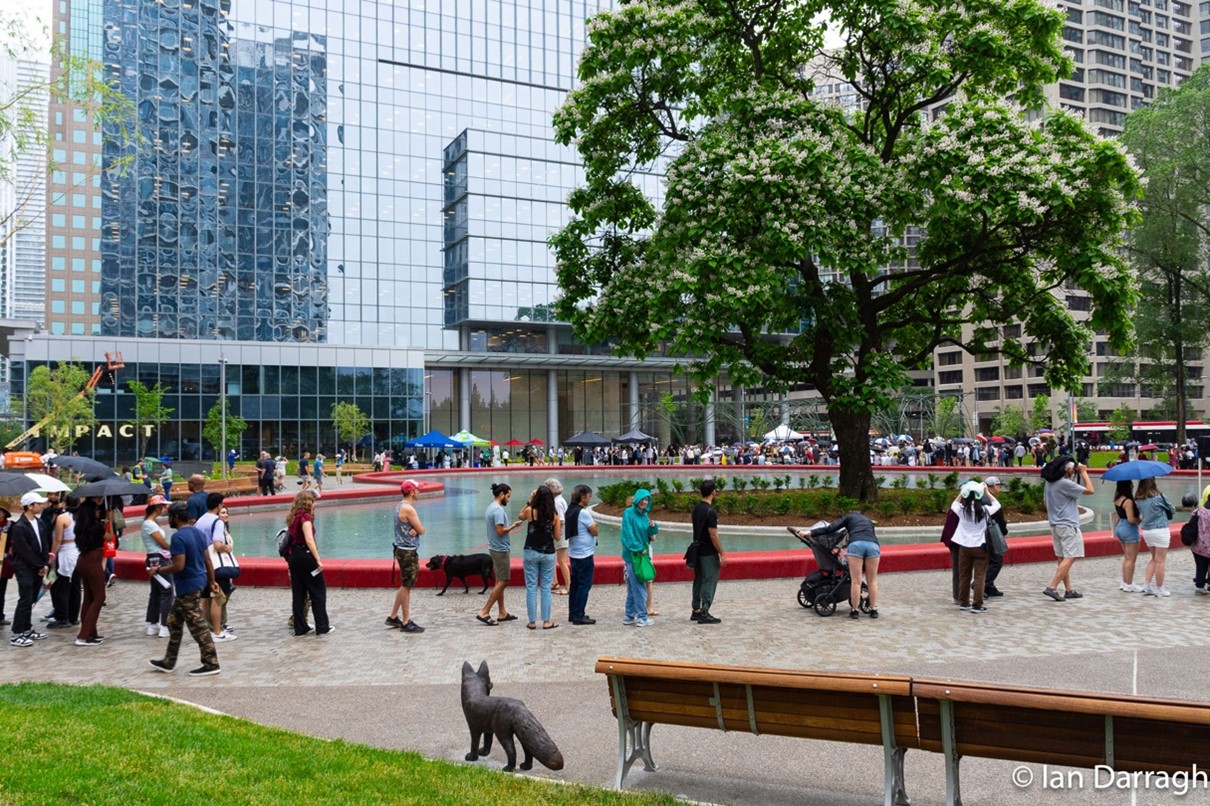
The new park adds a welcome touch of whimsy amid the brutal glass and concrete office towers that surround it at York and Queen’s Quay West streets. Reflecting its name, the new park features a heart-shaped pond that is already home port for an armada of toy sailboats. While some mature trees had to be felled to create the park, a rare flowering northern catalpa tree occupies an islet in the pond, its orchid-like petals slowly falling in the water.
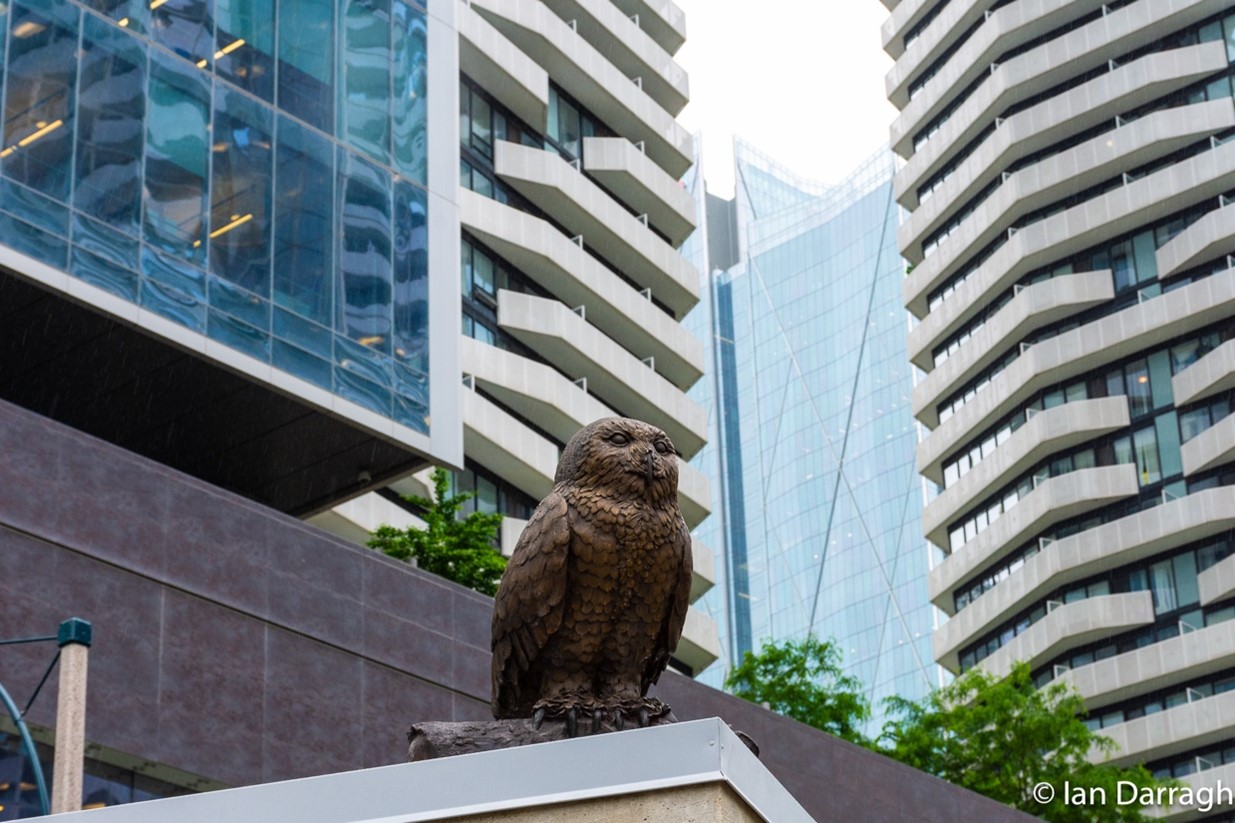
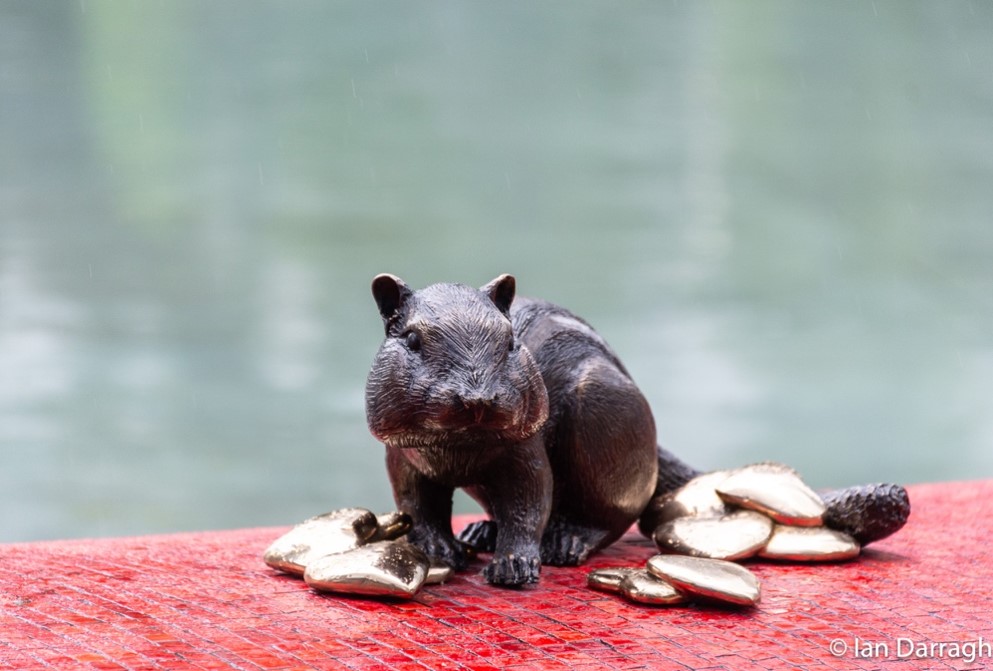
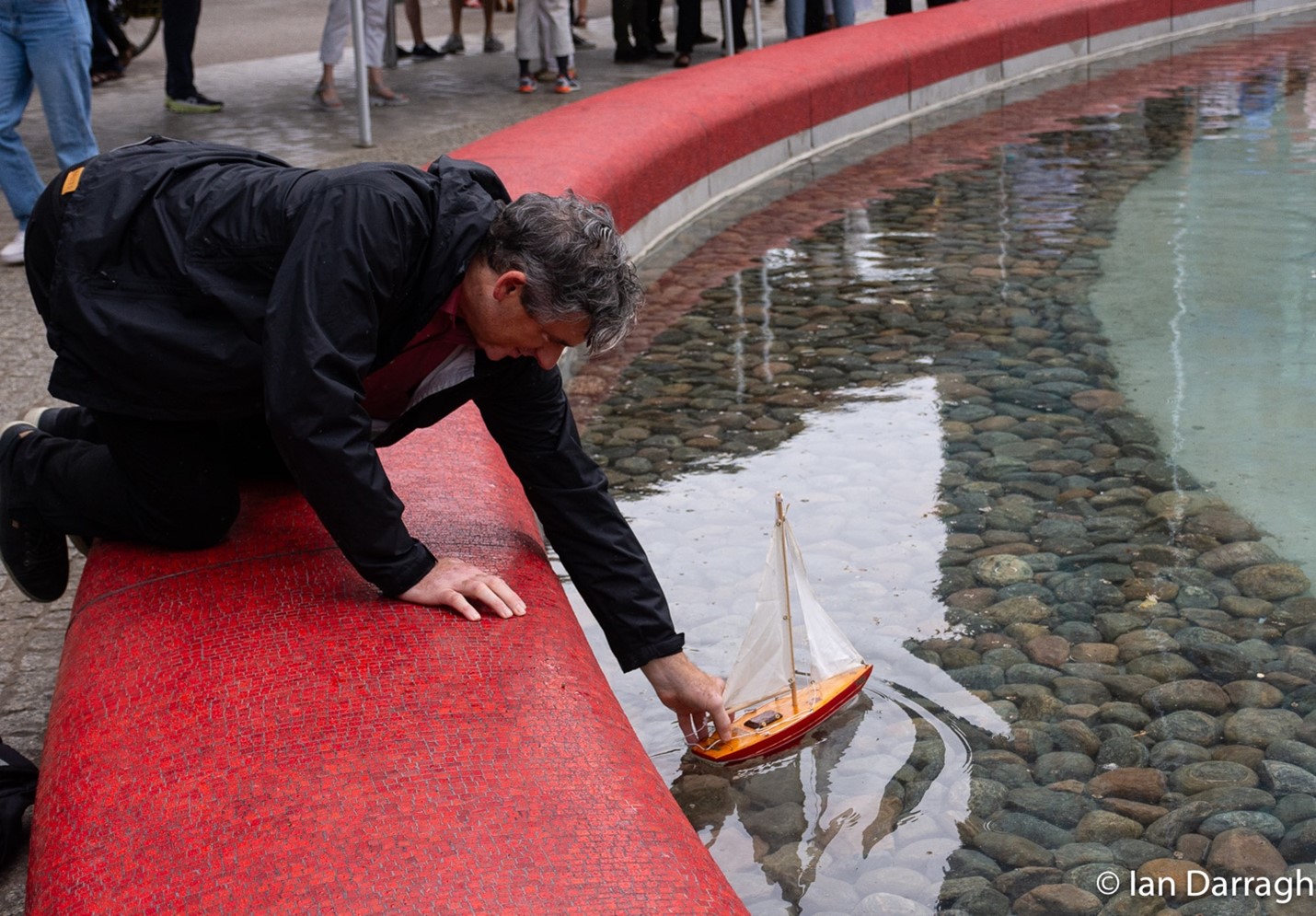
An international competition was held to select the designer. The winner was Claude Cormier of Montreal, who has already designed two iconic parks in downtown Toronto – Sugar Beach, with its pink umbrellas, and Berczy Park, featuring a two-tier fountain with statues of 27 dogs and a cat. Both parks have become major tourist draws for Toronto. Cormier studied landscape architecture at the University of Toronto. He seems to have a knack for delivering designs that delight Torontonians. Instead of wasting time with drawn-out competitions, perhaps we should just appoint him landscape architect laureate of Toronto?
Cormier’s taste for whimsy at Love Park is displayed in the nine bronze statuettes of iconic Canadian wildlife scattered around in odd places. It would be fun taking a child to the park and playing a game of “find the wild critter.”
Love Park cost $13 million to build. It’s worth visiting just to see what $13 million can get you these days as construction costs have ballooned post-pandemic.
I asked several residents of the Harbourfront neighbourhood for their assessment of the new park. The common thread in their comments were concerns that the pond will become a magnet for trash, and that City of Toronto Parks, Recreation and Forestry doesn’t have the operational budget to keep the park clean. One of the themes I heard from numerous conference participants is that every urban park now needs a “Friends of” association of citizens to pick up garbage, tend flowerbeds, remove invasive species, and install amenities because municipalities don’t have enough staff or money.
The other concern is that Love Park will attract unsheltered folks who will set up tents on the newly laid sod.
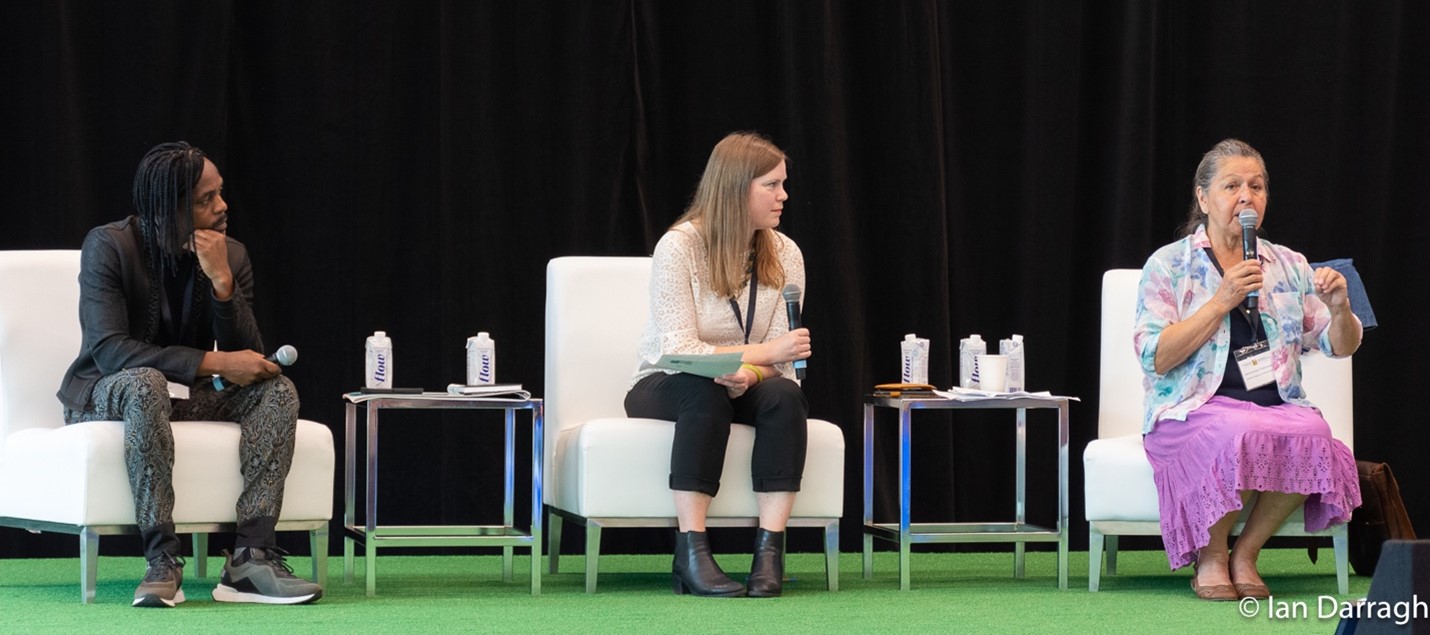
The housing crisis was the theme of a workshop earlier in the day at the Park People Conference. The discussion was led by Marie McGregor Pitawanakwat, an Indigenous woman who has experienced homelessness several times in her life, and David Touchette, who works as a mobile mediator for non-profit Exeko, which serves Montreal’s unsheltered population.
Pitawanakwat pointed out that under the UN Universal Declaration of Human Rights, Article 13, signed by Canada in 1948: “Everyone has the right to freedom of movement and residence within the borders of each State.” She argued that every Canadian citizen and permanent resident has a right to a residence within Canada, and evicting folks from wherever they have set up their residence, including public parks, violates their human rights. She argued passionately against evictions from parks and other public spaces. She noted that for many Indigenous peoples, evictions in parks awakens memories of the trauma of the Sixties Scoop, when children were forcibly removed from their families and sent into the child welfare system. She asked why a rich country with the second-largest landmass in the world, almost 10 million sq. km, cannot find enough land to build affordable housing for all its citizens?
Both panelists acknowledged that it’s not easy for local residents to understand and sympathize why “homeless” persons are living in their local park, and they have a right to be concerned for the safety of their children.
David Touchette said his first question when his agency is called in to defuse conflicts in parks is: “What is the real problem here?” If unsheltered folks are using the splash pad to wash their clothes and bathe, Pitawanakwat and Touchette suggested negotiating schedules so everyone can use the park at particular times of the day.
Both panelists noted that the discussion is fraught with linguistic issues. People living temporarily in parks are not “homeless” – Canada is their home. Often they are not “unsheltered” – they have taken the initiative to build their own shelters out of whatever materials they can find: cardboard boxes, plywood, or tarps. Or they are living in tents. The phrase “houselessness” was suggested as the most neutral term for the current lack of affordable housing in our cities. It’s a crisis that also extends to many rural areas. And the root issues are intertwined with a shortage of mental health and addiction services.
Another theme at the conference was the benefits of creating park corridors to enable wildlife to move freely into and out of urban areas, and to create nature trails for hiking and mountain biking. Panelists from Edmonton, Montreal, and Toronto described their successes and challenges. Katie Turnbull of the Toronto and Region Conservation Authority described her work on The Meadoway, a project to restore grasslands and wetlands along a 16-km hydro corridor in Scarborough that connects with Rouge National Urban Park (to learn more, visit themeadoway.ca). Alexandre Beaudoin described the Darlington Ecological Corridor in Montreal, and Kristine Archibald, executive director of River Alliance, described a project to create a 100-km trail through 8,000 hectares of parks along the North Saskatchewan River in metro Edmonton.
The 2023 Park People Conference was an intense three days of workshops, field trips, and networking. Carol Sissons of Ottawa told me what struck her about the conference was the diversity of backgrounds of speakers and delegates, who ranged from grassroots volunteers like herself to professionals and public servants from the largest cities in Canada. She’s going back to Ottawa with many contacts she can reach out to for advice as she continues her work to create a new park in her neighbourhood in Ottawa.
See “People passionate about parks gather in Toronto” and “Field notes from a parks conference” for Ian Darragh’s reports on the previous days of the Parks People conference.
Photojournalist Ian Darragh is a former editor-in-chief of Canadian Geographic magazine.
All photos by Ian Darragh.

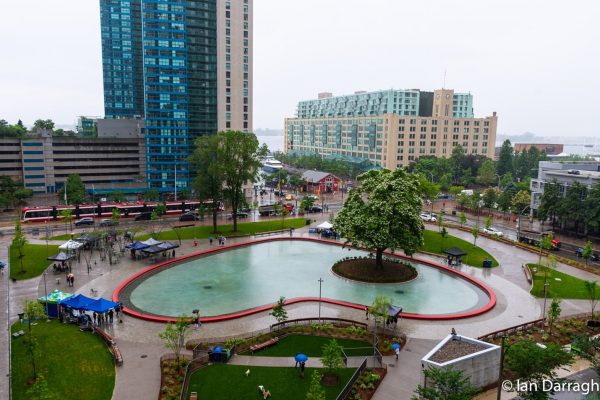


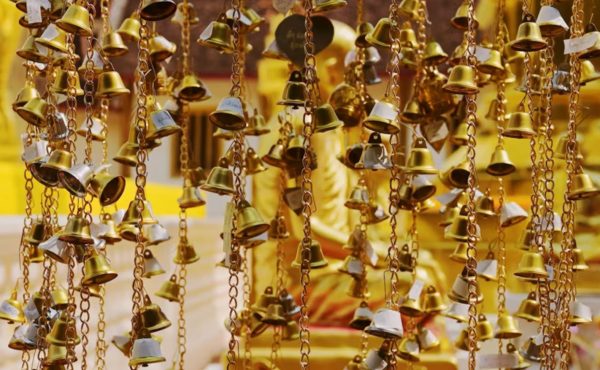
2 comments
The suburban councillors of Toronto would rather “pave paradise and put up a parking lot”.
Why did the Love Park pond turn green with envy?